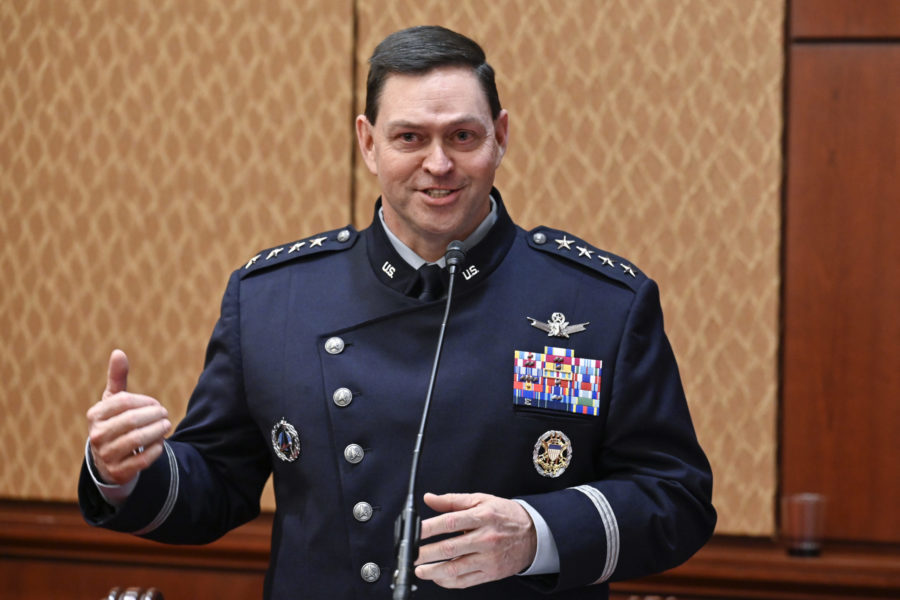Hoping to prod a debate on the Space Force’s future, Chief of Space Operations Gen. B. Chance Saltzman unveiled his “Theory of Success” concept Feb. 22, as the force carves out its military role. Within this debate, he said some ambiguity is acceptable.
Now in its fourth year, the service has outlined a broad goal of space superiority as key to any future U.S. fight. That mission is clear: America’s space assets must be able to provide critical services to the U.S. military, even under attack. But more granular details on how the Space Force plans to operate in the coming years are unsettled.
“The thing about space is, luckily, we haven’t conducted a war that’s gone on in space,” Saltzman said at an event hosted by the Center for Strategic and International Studies. “We have to figure space superiority out without the benefit of combat feedback. That means we’re going to have to start with a theory; we’re going to have to test it in the wargames and the exercises and the simulators of the world, and try to debate the idea and evaluate the conclusions that we draw.”
Saltzman took over as the second-ever Chief of Space Operations in November 2022. The former Air Force missileer said he intentionally hasn’t mapped everything he plans to do as CSO.
“I’ll knife fight the budget all day in the Pentagon, but I’ve lost kind of the perspective of what it means to literally operate a system in this new contested domain,” he said.
For Saltzman, nearly everything is up for debate in some form, including operational concepts, tactics, and platforms. He hopes the Space Force will welcome new ideas from inside the service, the commercial world, think tanks, and academia.
“If we don’t have some unifying principles to center on, then it really becomes an ad hoc kind of grab bag for capabilities you need to buy or build, or training that you need to give to the Guardians.”
The goal of space superiority is similar to the Air Force’s air superiority lodestar. But the Air Force has developed practical methods of achieving air superiority over decades, with tough lessons learned from conflicts such as Vietnam. With that experience, the Air Force developed specific tactics and platforms to, for example, suppress enemy air defenses to achieve its broader air superiority mission.
To achieve space superiority, the Space Force is formulating ideas such as more proliferated and cheaper satellite constellations to make its capabilities better withstand an attack and stay online. But Saltzman admits leaders in the E-Ring of the Pentagon have not yet figured everything out.
“There’s those of us that learned the old premise that the bomber will always get through,” Saltzman said. “It turns out the bomber didn’t always get through, and we had to kind of revise our thinking on how we provide airpower as an Air Force. I expect fully that our thoughts will evolve over time as we think about this theory of success—what works, what doesn’t work—as conditions change around it.”
However, Saltzman has some idea of what his “Theory of Success” will mean as he seeks to expand on his recently unveiled lines of effort: Fielding Combat-Ready Forces, Amplifying the Guardian Spirit, and Partnering to Win. To Saltzman, that means more quickly fielding up-to-date assets, fostering intellectual problem-solving Guardians, and increasing partnerships with allies, the rest of the U.S. military, and commercial companies. But Saltzman wants the future of the Space Force also defined by things the service has yet to articulate.
“There’s a lot of details to be sorted out, but I also know that the best answers are going to come from the young people that have their hands on the controls for these systems,” Saltzman said. “What I hope is that when they’re in the cafeterias, when they’re in the bars afterward, they’re talking shop. They’re talking about these concepts and they’re debating them, and they’re angry about it because they think they’ve got it right and somebody’s bringing evidence that says they’re wrong.”
